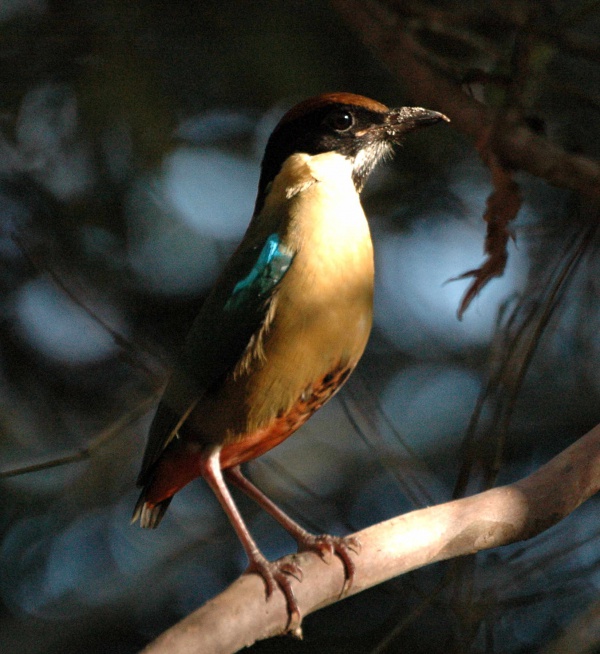Facts About Noisy pitta
The noisy pitta, a vibrant bird from the Pittidae family, inhabits eastern Australia and southern New Guinea. First described in 1825, this colorful bird is easily identifiable by its black head, chestnut crown, and lemon-yellow throat. Despite its striking appearance, it is more often heard than seen due to its elusive behavior.
The noisy pitta’s diet primarily consists of earthworms, insects, and snails. Notably, it employs a unique method to crack open mollusk shells by utilizing an anvil-like surface. The bird thrives in various forest types, particularly rainforests along the east coast of Australia and parts of southern New Guinea.
Taxonomically, the noisy pitta belongs to a superspecies group with other pittas. Currently, there are two recognized subspecies, although there is some debate about the existence of a potential third subspecies.
Breeding-wise, the noisy pitta nests on the ground. The timing and location of their breeding activities are often influenced by rainfall patterns, which can vary significantly.
Fortunately, the noisy pitta is not considered threatened and is classified as "Least Concern" on the IUCN Red List of Threatened Species. Although habitat destruction poses some risks, the population remains relatively stable. BirdLife International closely monitors its conservation status to ensure it remains secure.
